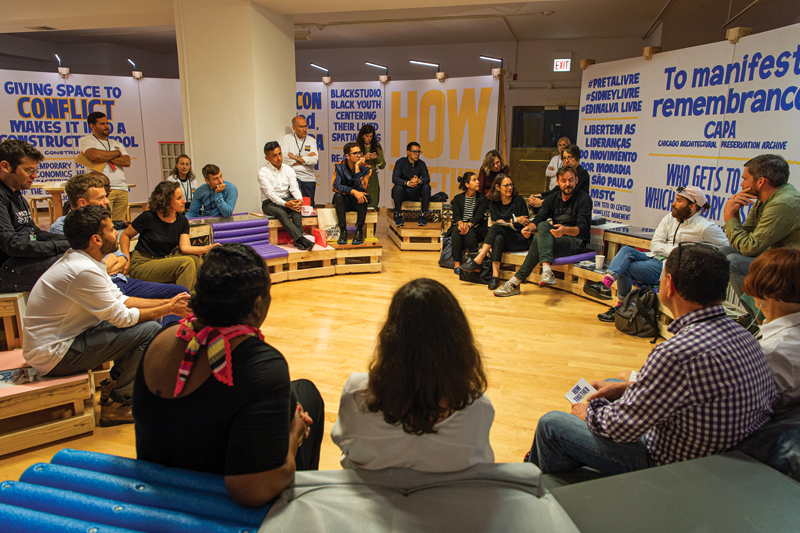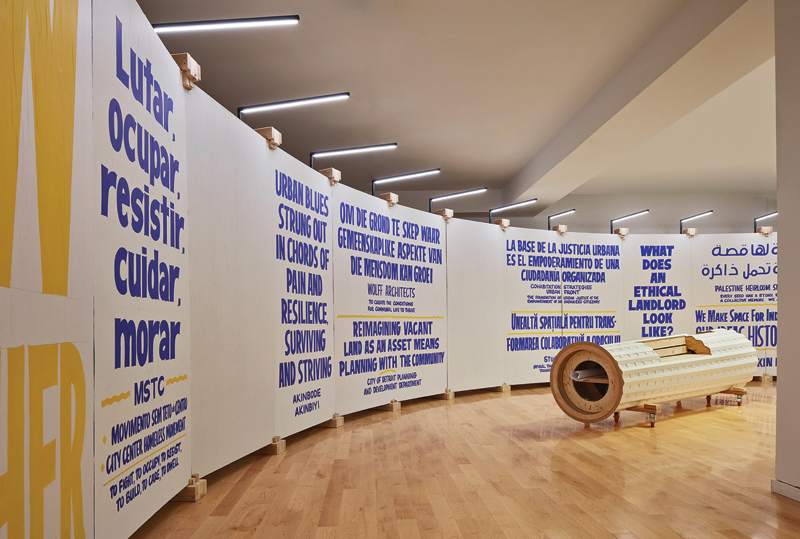The Land of Nod
Behold, thou hast driven me out this day from the face of the earth; and from thy face shall I be hid; and I shall be a fugitive and a vagabond in the earth; and it shall come to pass, that every one that findeth me shall slay me. – Genesis 4:14
“It’s hard, these days — really, really hard, y’all! — to be a white, male architect.”
Before blowing cookies and milk out your nose hyena laughing at that joke, it’s not a joke. Some white, male architects actually feel that way. Their professional association, after all, has been working overtime lately to let them know they have a diversity problem. The AIA’s “Diversity in the Profession of Architecture” report, released in 2015, found that, while moderate improvements had been made since the 2004 passing of Resolution 04-02, “To Strengthen the Demographic Diversity of the Design Profession,” there is still a long way to go before achieving even a semblance of parity, with only 21.7 percent of AIA members being women and merely 1.89 percent African American.
And then they show up somewhere like TxA’s 2019 Annual Conference and have to listen to keynote speakers, some of whom are women and people of color, talk about things like social impact design. Liz Ogbu, for example, presented the manual she worked on, “Dick & Rick: A Visual Primer for Social Impact Design.” With the simplicity and directness of a children’s book, it contrasts the stories of two designers, Dick and Rick (both white dudes, incidentally), who are working pro-bono on parks for underserved neighborhoods. Dick sees the project as an opportunity to burnish the image of his practice and, after a hasty community engagement process, delivers a nice but ultimately underutilized park. Rick, on the other hand, with humility and honest curiosity, involves himself in a lengthy back and forth with the neighborhood. His empathy and openness pay off, as the project he delivers is not only well used and loved, but the process of designing it collaboratively arms local stakeholders with valuable skills for the further improvement of their community. Ogbu’s message to architects: “Don’t be a Dick.”
Hardest of all, though, for the white, male architect, might be the experience of visiting a major event like the Chicago Architecture Biennial (p. 28) only to be faced with one exhibition after another detailing the histories of violence, dispossession, and cultural genocide that are the legacies of Western colonization. In the face of this and other such deconstructions and exposés, many yearn for a time when architecture and its related cultural events were just about architecture — the methodologies of design, technologies, regulations, and business models that go into making buildings — instead of the social and environmental ramifications of architecture. But when has architecture ever been so pure as to be separate from the environment and society?
The answer seems to be never. The shapes of the built environment have profound effects on the people who build and live within them. In “Tristes Tropiques,” Claude Lévi-Strauss documents just how deep this influence can go in his study of the Bororo:
The circular arrangement of the huts around the men’s house is so important a factor in their social and religious life that the Salesian missionaries in the Rio des Garças region were quick to realize that the surest way to convert the Bororo was to make them abandon their village in favor of one with the houses set out in parallel rows. Once they had been deprived of their bearings and were without the plan which acted as a confirmation of their native lore, the Indians soon lost any feeling for tradition; it was as if their social and religious systems … were too complex to exist without the pattern which was embodied in the plan of the village and of which their awareness was constantly being refreshed by their everyday activities.
The good news is that if the built environment can be used so effectively as a tool of conversion, it can be used to convert a bad situation into a good one. After all, that’s what the Salesian missionaries thought they were doing for the Bororo.
The better reaction to being shown how you/your ancestors got it wrong is not self-pity, it’s gratitude. Now is actually the best time to be a white, male architect. Today, we’re armed with more information and perspective on the mistakes of our forebears, and thus can do a better job than they did in shaping an equitable, sustainable, delightful future. Out here where we all live, somewhere east of Eden, a little constructive criticism can go a long way.

Aaron Seward is managing editor at Perkins&Will and a former editor of this magazine. He lives in Austin.


